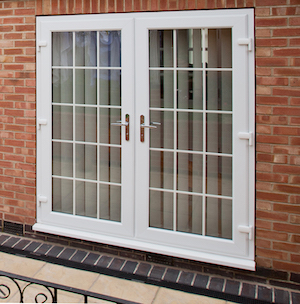The 10 Scariest Things About French Door Replacement
페이지 정보
작성자 AG 작성일25-08-23 18:45 (수정:25-08-23 18:45)관련링크
본문
French Door Replacement: A Comprehensive Guide
French doors are a popular option among property owners for their visual appeal and capability to improve natural light in a room. Nevertheless, like any home function, they may require replacement gradually. Elements such as wear and tear, shifting climate demands, and modifications in individual design can result in the requirement for new French doors. This article provides a helpful summary of French door replacement, detailing when to change them, the types offered, steps in the replacement process, prospective costs, and regularly asked concerns.
When to Consider French Door Replacement
Replacing French doors might become necessary for a number of factors, consisting of:

- Damage: Cracks, warping, and damaged hardware can jeopardize functionality and safety.
- Energy Efficiency: Outdated doors might not provide appropriate insulation, resulting in increased energy costs.
- Aesthetic Changes: Home renovations or modifications in individual taste can trigger the desire for new doors.
- Performance Issues: Difficulty in opening or closing, or an absence of smooth operation may signify it's time for replacement.
Signs Your French Doors Need Replacement:
- Water damage or rot in wood frames
- Draughts even when doors are closed
- Problem in locking or sticking doors
- Visible signs of wear such as peeling paint or rust
- Condensation between double-glazed panes
Types of French Doors
When thinking about replacement, house owners have numerous alternatives available:
Material Types:
- Wood: Classic, conventional appearance with outstanding insulation but requires regular maintenance.
- Fiberglass: Durable and energy-efficient, simulating the appearance of wood without the maintenance.
- Vinyl: Low maintenance with energy-efficient properties, typically offered in various colors.
Designs:
- Swinging French Doors: Open inward or external, ideal for large openings.
- Sliding French Doors: Convenient for smaller sized spaces, smoothly glide open on a track.
- Multi-Panel French Doors: Feature a number of panels for an extensive view and modern appeal.
Glass Types:
- Single-pane: Basic and inexpensive however less energy-efficient.
- Double-pane: Improved insulation; suggested for energy conservation.
- Tempered Glass: Safety glass that withstands breakage.
Steps for Replacing French Doors
Replacing French doors needs thorough preparation and execution. Below is a step-by-step guide:
1. Measuring the Door Frame
Accurate measurements of the opening are essential to guarantee the brand-new doors fit correctly. Step the height and width of the frame and the thickness of the existing door.
2. Choosing the Replacement Doors
Pick the kind of French door that matches your home's design and your budget. Think about products, designs, and hardware alternatives while making the selection.
3. Getting Rid Of the Old Doors
Thoroughly eliminate the present doors and dismantle the hardware. Be cautious not to damage the frame during this procedure.
4. Preparing the Frame
Check the door frame for damage and make essential repairs. Guarantee the frame is square and level, as this will impact the installation of the brand-new doors.
5. Installing the New Doors
- Place the New Doors: Set the brand-new French doors in the frame, guaranteeing they fit snugly.
- Level and Secure: Use shims to level the doors. Secure the doors with screws, making sure that hinges are correctly aligned.
- Set up Hardware: Attach handles, locks, and other hardware.
6. Ending up Touches
Seal around the edges with caulk to avoid drafts and enhance energy efficiency. If the doors are wooden, consider finishing or painting them.
7. Evaluating
Open and close the doors numerous times to ensure smooth operation and appropriate alignment.
Cost of French Door Replacement
The expense of replacing French doors differs based upon products, design, and labor. Below is a table summarizing the approximated costs related to various kinds of French doors:
| Type of Door | Average Cost (Material Only) | Installation Cost Range | Total Estimated Cost |
|---|---|---|---|
| Wood | ₤ 400 - ₤ 2,000 | ₤ 200 - ₤ 500 | ₤ 600 - ₤ 2,500 |
| Fiberglass | ₤ 600 - ₤ 2,500 | ₤ 200 - ₤ 500 | ₤ 800 - ₤ 3,000 |
| Vinyl | ₤ 300 - ₤ 1,500 | ₤ 200 - ₤ 500 | ₤ 500 - ₤ 2,000 |
Keep in mind: Costs may differ based upon area, brand, and specifics of the installation task.
Frequently Asked Questions About French Door Replacement
Q: How long does it require to change French doors?A: The replacement
process typically takes a couple of hours to a day, depending upon the intricacy of the job and if extra repairs are needed.
Q: Are French doors energy efficient?A: Modern French doors,
especially those with double-pane glass and appropriate sealing, can be extremely energy efficient. Q: Can I install French doors myself?A: While DIY installation is possible for experienced homeowners, employing a professional is encouraged to guarantee a proper fit and surface, specifically if modifications to the frame are essential. Q: What is the average lifespan of French doors?A: With appropriate maintenance, French doors can last anywhere from 15 to 30
years, depending on the material and environmental conditions. French door replacement improves a home's performance and appeal. By understanding when to replace them, what options are readily available, and how to set about the installation, homeowners can make informed decisions that include worth and appeal to their living areas. With proper care, new French doors can provide years of service, comfort, and style.
댓글목록
등록된 댓글이 없습니다.

